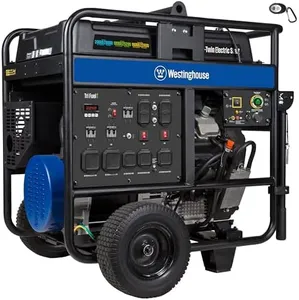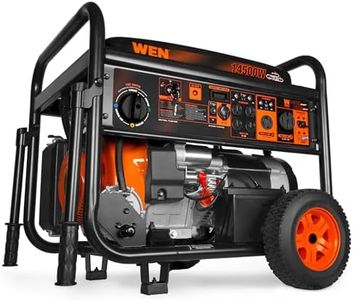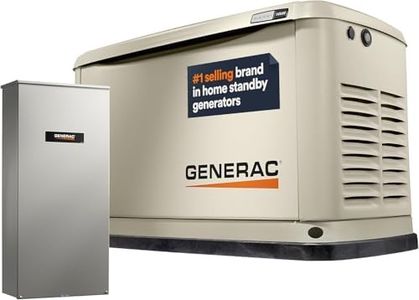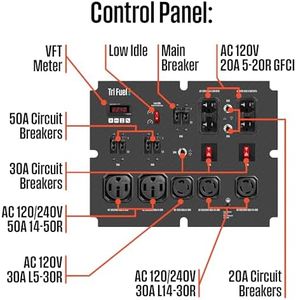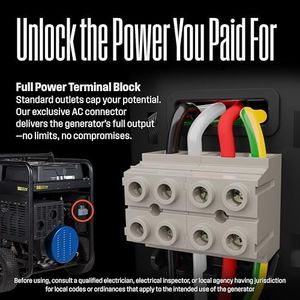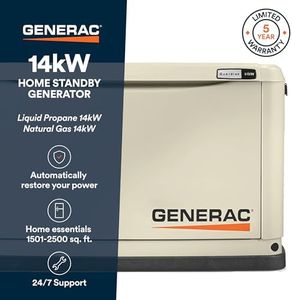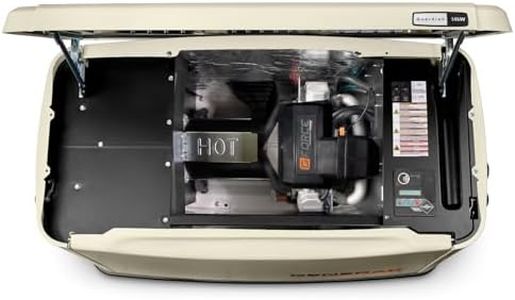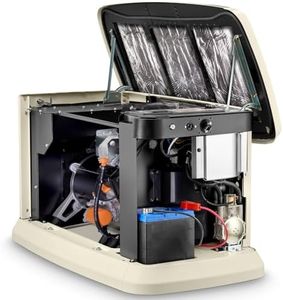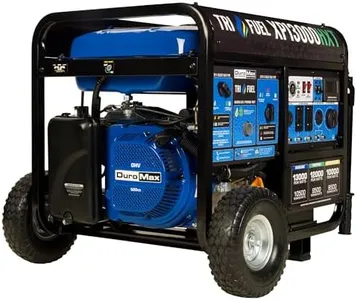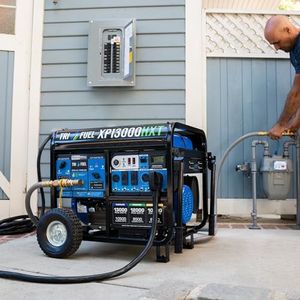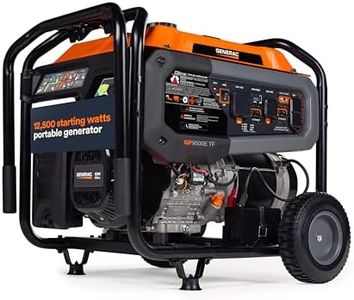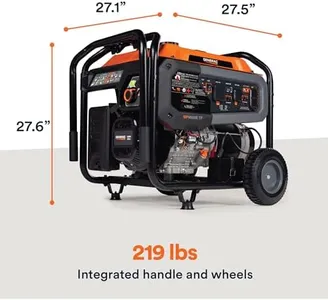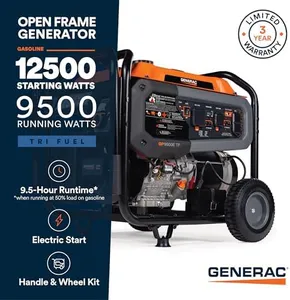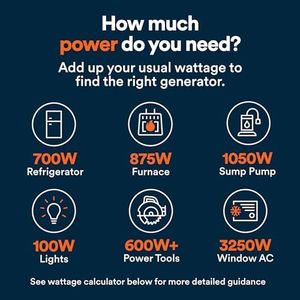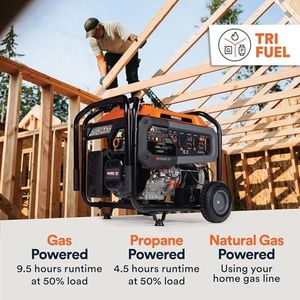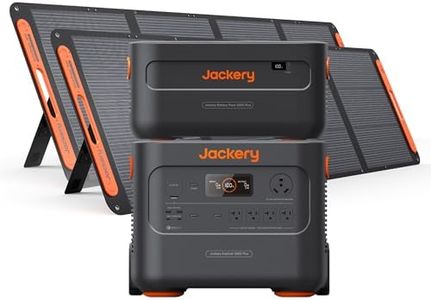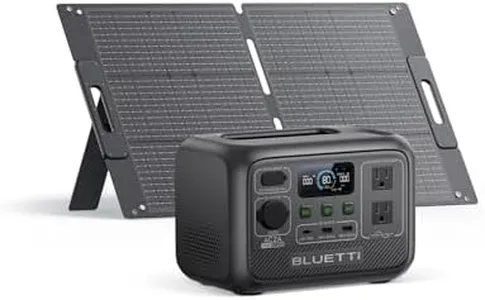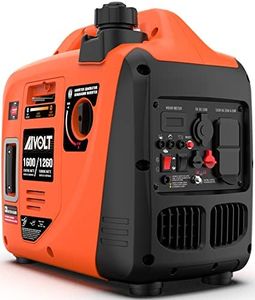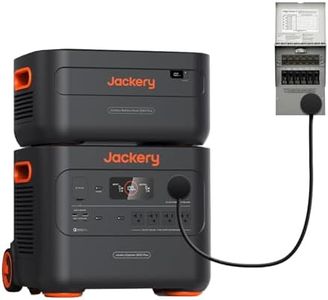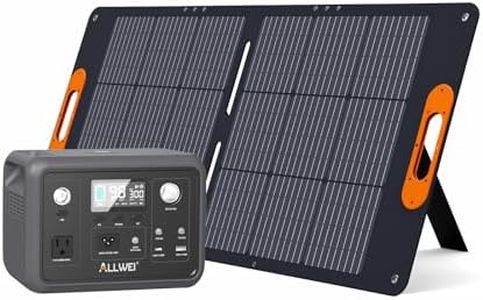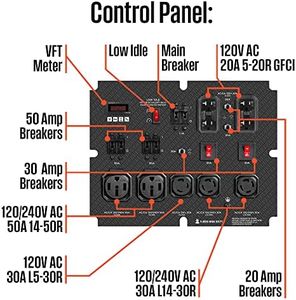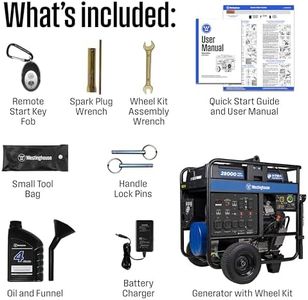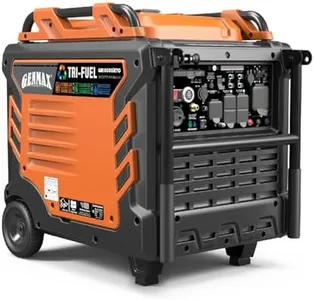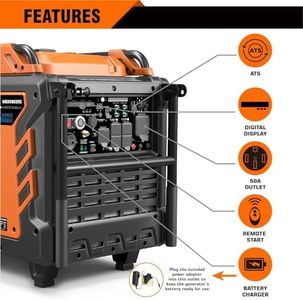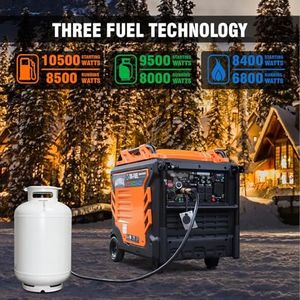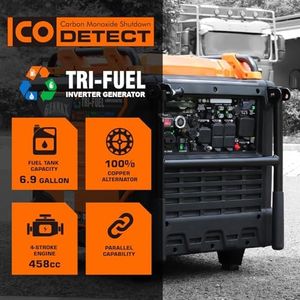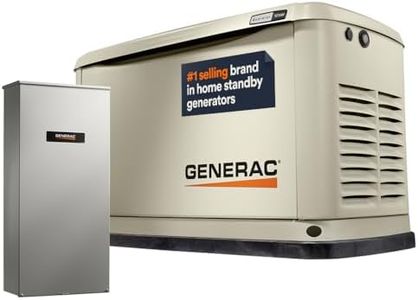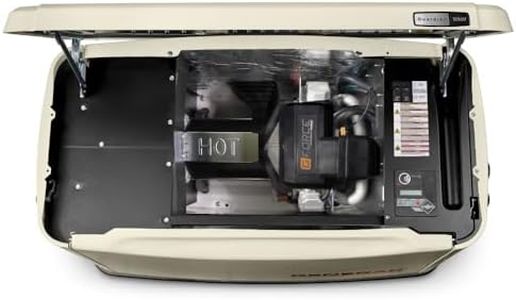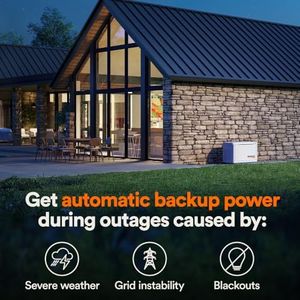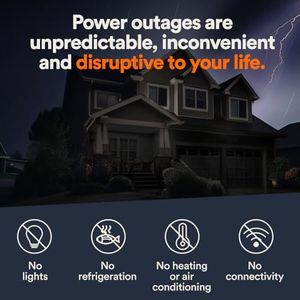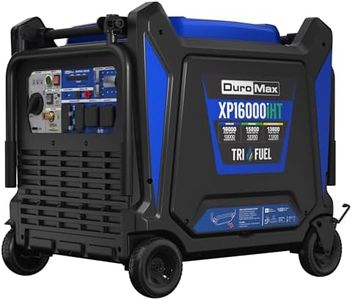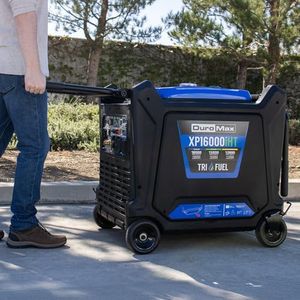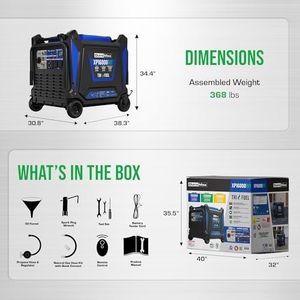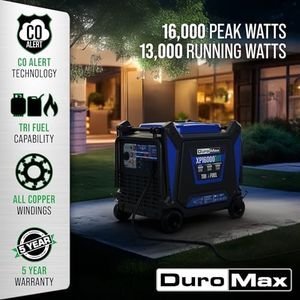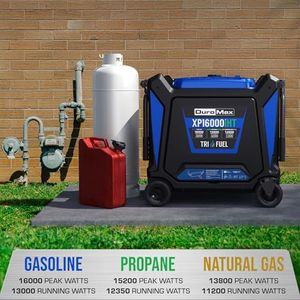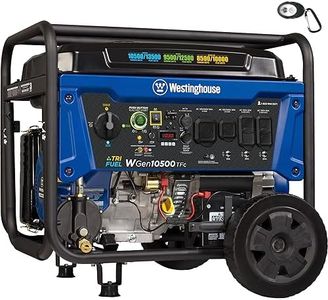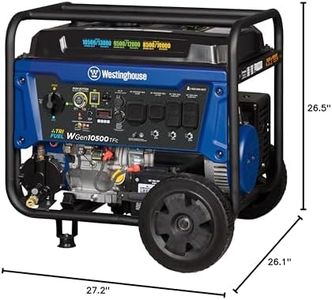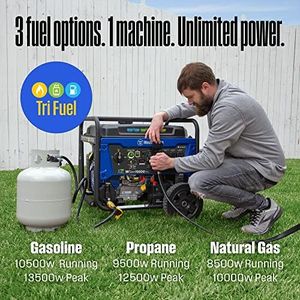10 Best Natural Gas Home Generators 2025 in the United States
Winner
Westinghouse 28000 Peak Watt Tri-Fuel Home Backup Portable Generator, Remote Electric Start, Transfer Switch Ready, Gas, Propane, and Natural Gas Powered
The Westinghouse 28000 Peak Watt Tri-Fuel Generator is a strong choice for homeowners needing a powerful backup power source, especially for larger homes. It offers impressive wattage, with up to 28,000 peak watts on gasoline and solid power even on natural gas (16,000 running watts), which is ideal for running multiple appliances during outages. Its tri-fuel capability (gasoline, propane, and natural gas) adds great flexibility depending on fuel availability, and the 17.2-gallon tank allows around 13 hours of runtime at a quarter load on gasoline, which is convenient for extended power needs.
Most important from
231 reviews
WEN 14,500-Watt 120V/240V Tri-Fuel Generator for Gas, Propane, and Natural Gas, Transfer-Switch Ready with Electric Start and Wheel Kit (TF1450)
The WEN 14,500-Watt Tri-Fuel Generator is a powerful and flexible option for home backup, capable of running on gasoline, propane, or natural gas. It delivers 11,500 running watts on gasoline with a peak of 14,500 watts, which is enough to power most household essentials during outages. When using natural gas, it offers lower power (8,750 running watts) but still covers basic needs. The 8.2-gallon fuel tank supports up to 12 hours of use at half load, which is decent for extended power outages.
Most important from
1945 reviews
Generac Guardian 14kW Home Standby Generator with 200 Amp Transfer Switch - Automatic Whole House Backup Power for Storms, Emergencies, and Outages, WiFi Enabled, Runs on Natural Gas or Liquid Propane
The Generac 7225 14kW Air Cooled Guardian Series Home Standby Generator is a solid choice for those looking for reliable, whole-house power backup. With its 14,000 watt power output and Generac's True Power Technology, this generator ensures clean, stable power with less than 5% total harmonic distortion, which is ideal for safely running sensitive electronics. The 200-amp automatic transfer switch provides comprehensive protection by seamlessly switching power during outages, and the inclusion of Wi-Fi connectivity allows for remote monitoring and maintenance alerts, adding an extra layer of convenience and peace of mind. This feature is particularly useful for those who travel frequently or own multiple properties.
Most important from
431 reviews
Top 10 Best Natural Gas Home Generators 2025 in the United States
Winner
Westinghouse 28000 Peak Watt Tri-Fuel Home Backup Portable Generator, Remote Electric Start, Transfer Switch Ready, Gas, Propane, and Natural Gas Powered
Westinghouse 28000 Peak Watt Tri-Fuel Home Backup Portable Generator, Remote Electric Start, Transfer Switch Ready, Gas, Propane, and Natural Gas Powered
Chosen by 1201 this week
WEN 14,500-Watt 120V/240V Tri-Fuel Generator for Gas, Propane, and Natural Gas, Transfer-Switch Ready with Electric Start and Wheel Kit (TF1450)
WEN 14,500-Watt 120V/240V Tri-Fuel Generator for Gas, Propane, and Natural Gas, Transfer-Switch Ready with Electric Start and Wheel Kit (TF1450)
Generac Guardian 14kW Home Standby Generator with 200 Amp Transfer Switch - Automatic Whole House Backup Power for Storms, Emergencies, and Outages, WiFi Enabled, Runs on Natural Gas or Liquid Propane
Generac Guardian 14kW Home Standby Generator with 200 Amp Transfer Switch - Automatic Whole House Backup Power for Storms, Emergencies, and Outages, WiFi Enabled, Runs on Natural Gas or Liquid Propane
DuroMax XP13000HXT 13,000-Watt 500cc Tri Fuel Gas Propane Natural Gas Portable Generator with CO Alert, Black/Blue
DuroMax XP13000HXT 13,000-Watt 500cc Tri Fuel Gas Propane Natural Gas Portable Generator with CO Alert, Black/Blue
Generac 12,500 Starting Watt Tri-Fuel Portable Generator - Electric Start - Gas, Propane or Natural Gas - Home Backup, Jobsite, or RV - Quiet Operation - Long Runtime - 49-State Compliant
Generac 12,500 Starting Watt Tri-Fuel Portable Generator - Electric Start - Gas, Propane or Natural Gas - Home Backup, Jobsite, or RV - Quiet Operation - Long Runtime - 49-State Compliant
Westinghouse 28000 Peak Watt Home Backup Portable Generator, Remote Electric Start with Auto Choke, Transfer Switch Ready 30A & 50A Outlets, Gas Powered, CO Sensor,Blue
Westinghouse 28000 Peak Watt Home Backup Portable Generator, Remote Electric Start with Auto Choke, Transfer Switch Ready 30A & 50A Outlets, Gas Powered, CO Sensor,Blue
GENMAX Tri Fuel Generator,10500-Watt 458cc Tri Fuel Gasoline Propane Natural Gas Portable 50A Generator with Remote Start,Ideal for Home backup power.
GENMAX Tri Fuel Generator,10500-Watt 458cc Tri Fuel Gasoline Propane Natural Gas Portable 50A Generator with Remote Start,Ideal for Home backup power.
Generac Guardian 10kW Home Standby Generator with 100 Amp Transfer Switch - Automatic Whole House Backup Power for Storms, Emergencies, and Outages, WiFi Enabled, Runs on Natural Gas or Liquid Propane
Generac Guardian 10kW Home Standby Generator with 100 Amp Transfer Switch - Automatic Whole House Backup Power for Storms, Emergencies, and Outages, WiFi Enabled, Runs on Natural Gas or Liquid Propane
DuroMax XP16000iHT 16,000-Watt Tri Fuel Portable Digital Inverter Generator - Gas, Propane & Natural Gas, Remote Electric Start, Whole Home Power Backup, Transfer Switch Ready, RV & Emergency Ready
DuroMax XP16000iHT 16,000-Watt Tri Fuel Portable Digital Inverter Generator - Gas, Propane & Natural Gas, Remote Electric Start, Whole Home Power Backup, Transfer Switch Ready, RV & Emergency Ready
Westinghouse 13500 Peak Watt Tri-Fuel Home Backup Portable Generator, Remote Electric Start, Transfer Switch Ready, Gas, Propane, and Natural Gas Powered
Westinghouse 13500 Peak Watt Tri-Fuel Home Backup Portable Generator, Remote Electric Start, Transfer Switch Ready, Gas, Propane, and Natural Gas Powered
Our technology thoroughly searches through the online shopping world, reviewing hundreds of sites. We then process and analyze this information, updating in real-time to bring you the latest top-rated products. This way, you always get the best and most current options available.

